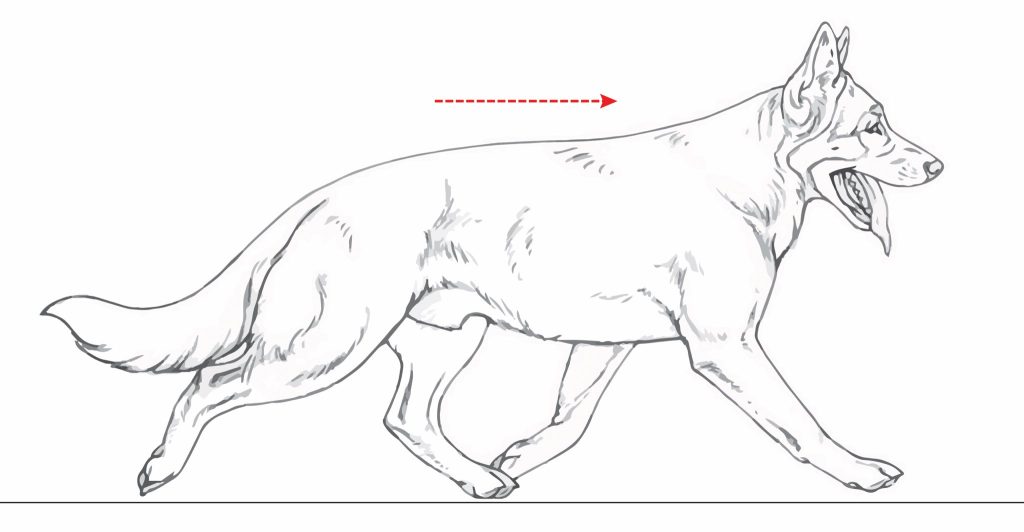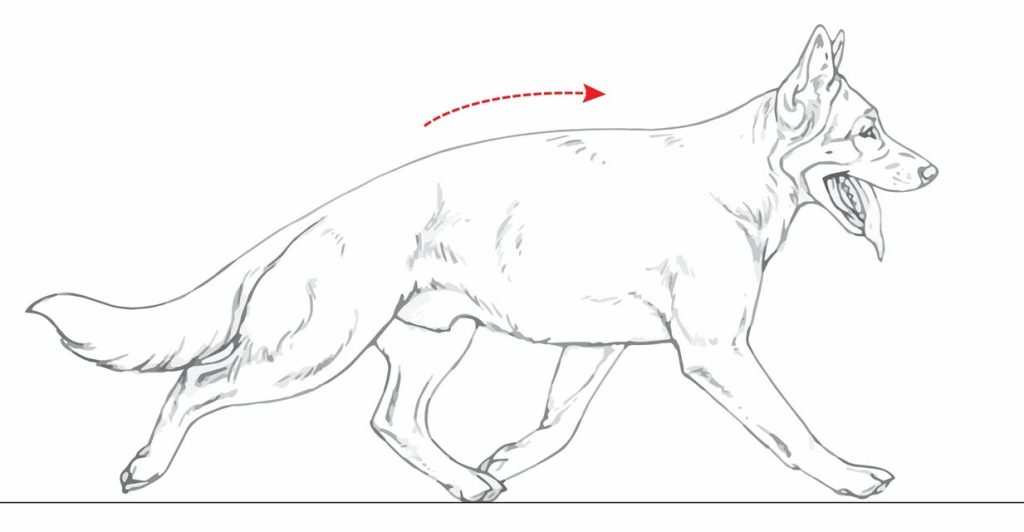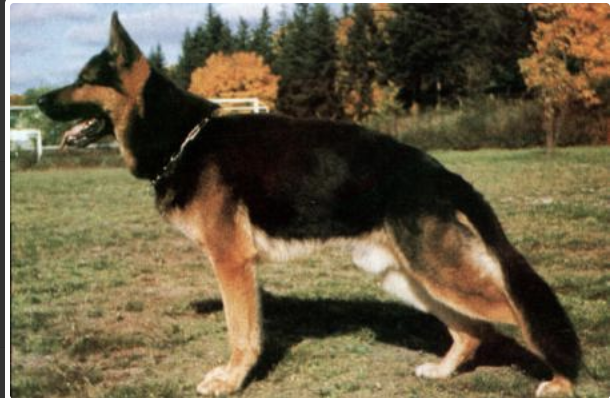A post for students of canine anatomy.


In working dog breeds, a straight, tight and stable thoracolumbar spine is desirable because it provides the best skeletal form for energy and stride iefficient mechanics at the trot.
In a skeletally normal dog, correct spinal alignment supports an optimum pelvic angle that via the rear pivot point balances the energy received from the ground reaction force between hindquarter lift and forward energy transmission.This allows the forward thrust generated by the hindquarters to be channelled smoothly and efficiently through the spine into the forward pivot point within the withers, where it can be redistributed efficiently into forehand lift and reach.
When the spine is curved, the balance of energy distribution is compromised. This is because the pelvis/croup is inclined (becomes steep) relative to the degree of curvature, shifting the balance toward vertical lift at the expense of forward transmission and too much energy arriving in the withers is directed downward rather than forward, impeding the forereach.
Dogs with a curved spine, a powerful rear drive and strong desire to run apply various compensatory limb and footfall actions with all incurring increased energy consumption and early fatigue. Maybe for some judges where theatre is important it’s not an issue, but it’s a ‘significant impediment’ to a working dog!
Footnote: Ground reaction force; energy, is directed to and then distributed via two pivot points. The rear pivot point is the hip joint. The forward pivot point lies about one-third of the way down from the scapular ridge and is contained within the serratus ventralis muscle, which attaches the scapula to the rib cage.
Source: Louis Donald
